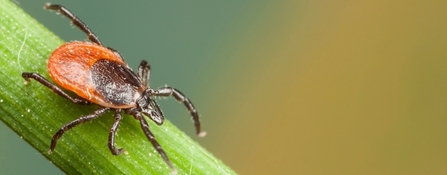If you are a cat or dog owner you are probably familiar with ticks. They live in long grass, bushes, wooded areas or even in gardens and can be active all year round but are most active in the warmer months. Therefore when your pets are wandering outside or out on a dog walk they are more likely to pick up a tick in the summer. These small invertebrates are related to spiders and can attach to the skin of your pet and suck on their blood, often swelling and increasing in size as they feed. Not very nice! Unfortunately, ticks can also feed on humans and can, very rarely, transmit Lyme disease which can have long term effects. Here are some ways of staying safe this summer whilst you are out enjoying nature.
The best way to stay safe is to reduce the chance of being bitten. Try to stay on clearly defined paths when exploring, cover your skin where possible by wearing long trousers and sleeves and tuck your trousers into your socks. This will help by making it more difficult for a tick to find some skin to latch onto.
Once you have finished your walk, it’s time to do a ‘tick check’. Take a shower and have a good look over your body, checking arms and legs for any ticks that may have gotten through. Check yourself all over including arm pits and back of knees. It might also be worth checking or washing your clothes incase any ticks are hiding in your clothes.


